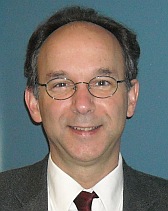Summary and Curriculum Vitae
Lecture
Radar Remote Sensing & Polarimetry
Radar exploits an active, controlled source illuminating distant objects at wavelengths from mm to meters. As such, radar is a unique remote sensing tool that reaches out and touches objects to understand their geometric and dielectric characteristics at a variety of scale sizes. This lecture will provide a broad overview of radar remote sensing science and instrumentation, with emphasis on the uniqueness of radar relative to other sensing techniques, and how the intrinsic backscatter measurements can lead to physical understanding of the earth and planets.
The learning modules of this unit are:
- What is Remote Sensing?
- Radar Altimeter
- Scatterometry & Sea Wind Radar
- Imaging Radar
- Properties
- Applications
- Polarimetry
- Polarimetric representation
- Polarized waves
- Scattering
- Freeman decomposition
- Classification with Polarimetry
- Polarizations Signature
- Polarimetric Interferometry
- Polarimetric Tomography
- Interferometry
About the Lectuerer

| Personal information | |
| First name, Surname: | Paul Rosen |
| Title: | Dr. |
| Organisation: | Jet Propulsion Laboratory |
Paul Rosen is Manager of the Jet Propulsion Laboratory's Radar Science & Engineering Section, a group of nearly 130 scientists and engineers defining, designing, and building state-of-the-art radar instruments for NASA's Earth and planetary science missions.
His assignments at JPL have centered on scientific and engineering research and development in methods and applications of Synthetic Aperture Radar (SAR) and interferometric SAR (InSAR). He was supervisor of the Interferometric SAR and System Analysis Group at JPL from 1995 until November 2002. Dr. Rosen has developed and promoted scientific applications of differential interferometry, including crustal deformation mapping and hazard assessment, and has led several proposals for surface deformation satellite missions.
Dr. Rosen was the Shuttle Radar Topography Missions (SRTM) Project Element Manager for Algorithm Development and Verification from 1996 to 2000, and was the SRTM metrology Tiger Team lead in 2001. From 2002 to 2004, he led a NASA-funded collaboration with the Air Force Research Laboratory, developing dual use L-band radar technology. Most recently, he has been leading joint (interagency) radar mission studies. Dr. Rosen is also a visiting faculty member and lecturer at the Division of Geological and Planetary Sciences at the California Institute of Technology, and he has authored or co-authored over 30 journal articles and two book chapters. Dr. Rosen was recently named Pre-Project Scientist for the Deformation, Ecosystems, and Dynamics of Ice (DESDynI) mission as an additional duty.
Prior to JPL, Dr. Rosen worked at Kanazawa University, Kanazawa, Japan, studying wave propagation in plasmas, and the dynamics and observations of Saturn's rings. As a post-doctoral scholar and graduate student at Stanford University, he studied the properties of the rings of the outer planets by the techniques of radio occultation using data acquired from the Voyager satellites, discovering new dynamical features in the rings of Saturn and Uranus.
